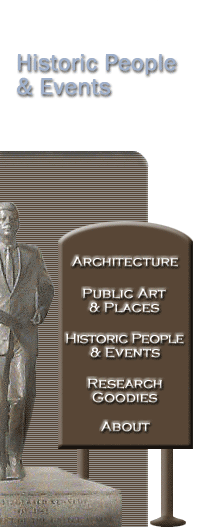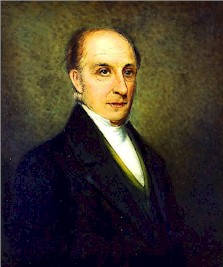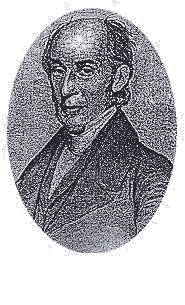Welcome to iBoston

| 
Charles Bulfinch
 The Great Selectman The Great Selectman
After graduating Harvard in 1781, young Charles Bulfinch (1763-1844) "found
himself at leisure to cultivate a taste for Architecture." After an eighteen
month trip organized by Thomas Jefferson he returned home, and took up the
practice of Architecture, establishing himself as America's first natively
born practitioner. David Wolfe here provides an analysis
of the significance of the Bulfinch State House.
In Boston,
Bulfinch was much more than an architect. He was the figure which helped
Boston make the slow transition from town to city government. He was chairman
of Boston's board of selectman for all but four of the twenty-six years
between 1791 and 1817. He functioned substantially as an unpaid mayor, overseeing
police and fire services, and for the first time providing private development
interests with public direction. During these years Charles Bulfinch married,
started a family, and was an active Unitarian Universalist.
Prior to Bulfinch, private and public development were nearly synonymous.
In the town's history, private development was generally also to the common
good. Even the buildings of government were mainly formed by private design,
as illustrated by both the original Boston
Town House, and Faneuil
Hall. Yet Boston was a city on a peninsula, and its days of undirected
development were limited.
After
the State House
 The Massachusetts State House
established Bulfinch as America's leading architect. While still serving
as the unpaid chair of selectmen, Bulfinch undertook the expansion of Faneuil Hall
(1805), University
Hall (1815), John Phillips House (1804), and designed a succession of
three of homes for Harrison Gray Otis on Cambridge
(1796), Mt. Vernon (1800),
and Beacon Streets
(1805), in addition to Oakley, Otis' country home in Watertown, MA. The Massachusetts State House
established Bulfinch as America's leading architect. While still serving
as the unpaid chair of selectmen, Bulfinch undertook the expansion of Faneuil Hall
(1805), University
Hall (1815), John Phillips House (1804), and designed a succession of
three of homes for Harrison Gray Otis on Cambridge
(1796), Mt. Vernon (1800),
and Beacon Streets
(1805), in addition to Oakley, Otis' country home in Watertown, MA.
Though prolific and a natural designer, Bulfinch's wealth was diminished
during his time in Boston. He was insolvent several times including at the
start of his work on the statehouse, and was jailed in 1811 for debt. Serving
as a selectman had been an unpaid position. Further, he received only $1,400
for designing and overseeing the construction of the State House. In 1818
US President James Monroe appointed Bulfinch Architect
of the US Capitol at a salary of $2,500, plus expenses. The following
twelve and a half years in Washington he described as the happiest in his
life.
Boston's second mayor, Josiah
Quincy said of him: "During the many years he presided over the town
government, he improved its finances, executed the laws with firmness, and
was distinguished for gentleness and urbanity of manners, integrity and
purity of character."
|
|
| INTRODUCING |
|
From the writers of iBoston.org |
|
|
|



